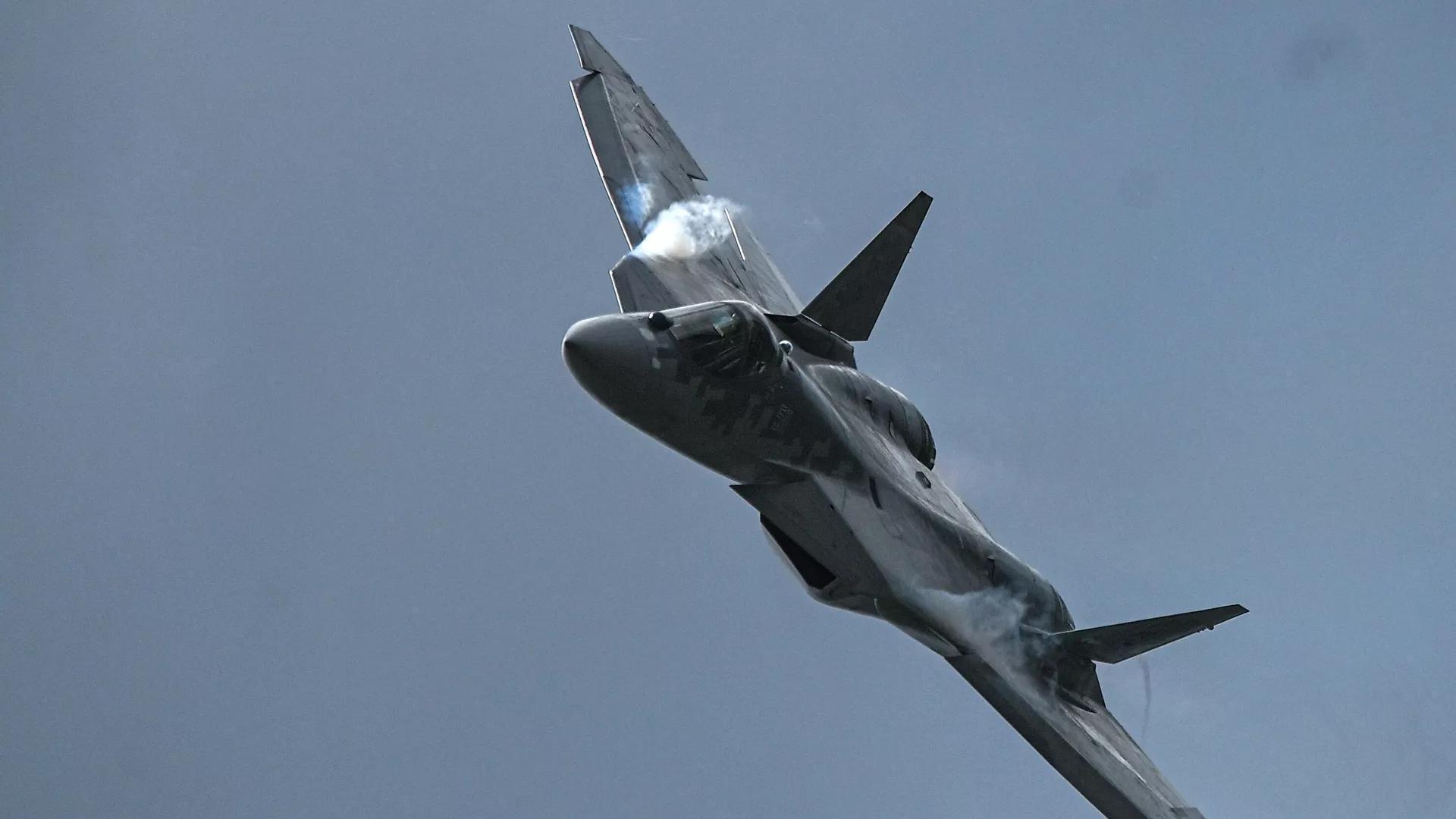Africa-Press – Mauritius. Russia’s cutting-edge Su-57 fighter has taken the lead in aerospace technology, and is set for accelerated deployment. This sets the stage for a clash of titans, pitting the Su-57’s unparalleled agility against the F-35’s capabilities, and highlights the Russian aircraft’s combat prowess during its deployment in the current Ukraine conflict.
Advanced onboard digital communications equipment has been installed on the fifth-generation Sukhoi Su-57 multifunctional fighter, contributing to enhanced information transmission quality.
During a recent coordinating council meeting, Prime Minister Mikhail Mishustin unveiled plans to accelerate the deployment of Su-57 fighters within the military. The move aims to enhance the operational capacity and combat readiness of the Russian Armed Forces.
Mishustin emphasized the significance of equipping the military with state-of-the-art technology, thus reinforcing the nation’s defense capabilities as a global superpower.
Sputnik dissects the implications of this Russian stealth multirole fighter aircraft and draw parallels with its contemporary peer – the Lockheed Martin F-35 Lightning II. What is the Purpose of the Su-57?
The Su-57, known by its alternate designation as the PAK-FA (Prospective Aviation Complex of Frontline Aviation) and NATO reporting name “Felon,” has emerged as a vanguard fifth-generation fighter jet and is a product of Russia’s Sukhoi Design Bureau’s ingenuity.
It is engineered to symbolize extraordinary maneuverability and cutting-edge stealth characteristics. This latest class of Sukhoi fighter aircraft is a worthy successor to the Su-27 (NATO reporting name “Flanker”) fighter jet within the ranks of the Russian Aerospace Forces.
Its purpose is manifold, encompassing the elimination of all airborne adversaries, precision strikes against ground and surface targets at night and in the day, and the art of penetrating fortified air defenses.
Beyond these combat functions, the Su-57 is vital to conducting aerial surveillance from a vantage point distant from the adversary’s base, exemplifying its role as a sentinel of the skies.
A revolutionary transformation of the fifth-generation Su-57 fighter’s capabilities is achieved through advanced avionics technology, representing a fusion of modern electronics and aerospace engineering.
The aircraft achieves heightened operational efficiency through advanced radar systems, communication interfaces, and navigation components, enabling the pilot to harness unprecedented control and assertiveness in the heat of combat.
What is the American Equivalent of Russia’s Sukhoi Su-57? The F-35 is an American family of advanced fighter aircraft designed for air superiority, strike missions, electronic warfare, and intelligence capabilities.
The US F-35 fifth-gen fighter plane was designed to replace the aging F-16 Fighting Falcon fleet. It’s a single-seat, single-engine aircraft with stealth features developed by Lockheed Martin, with partnerships from Northrop Grumman and BAE Systems.
The F-35 comes in three variants, each designed to fulfill specific combat roles: the conventional takeoff and landing (CTOL), the short takeoff and vertical landing (STOVL), and the carrier-based variant (CV/CATOBAR).
It is a versatile combat aircraft fitted with modern aviation technology that makes it adaptable for combat assignments. Key Features of Sukhoi’s Su-57
Drozdenko explains that the Russian fifth-generation fighter plane has low radar visibility and is equipped with twin engines, unlike the American single-engine fifth-generation fighter jet.
“This means greater survivability in flight.
” He added that F-35s have often faced challenges primarily related to rotor failure or partial engine issues. The Su-57’s ability to achieve supermaneuverability is its second most significant advantage, setting it apart from its American peer.
This remarkable agility is made possible by incorporating all-aspect nozzles and is further enhanced by an intelligent system. This system proves particularly valuable during close-quarters combat, enabling the execution of unparalleled maneuvers.
A notable innovation deserving attention is the incorporation of the revolutionary “smart skin” technology. This advancement empowers the aircraft with an unprecedented ability to observe its surroundings in a full 360-degree spectrum.
Currently, the Su-57 aircraft is undergoing trials for the specialized RVV MD-2 short-range air-to-air missile. This missile is uniquely optimized to leverage the capabilities of the “smart skin” system, enabling it to be deployed with remarkable flexibility in various directions, the military analyst noted.
Has the Su-57 Been Used in Combat? During an August 2022 interview on a Russian TV channel, Russia’s Defense Minister Sergey Shoigu, praised the advanced Su-57 fighters for their exceptional combat performance in Ukraine.
“We can say we have used and are using the Su-57 aircraft. This aircraft has shown itself brilliantly.
The aircraft has a very high degree of protection against various air defense systems, has protection against missiles. There is a lot of stuff there.
Most importantly, it has very powerful weapons.
We also tried and tested these weapons, they work brilliantly, I can’t find another word for it,” Shoigu remarked. Sukhoi’s Su-57 vs. F-35 – Which is Superior?
According to Drozdenko, the significance of the Su-57’s supermaneuverability would come into play during an actual combat scenario, particularly in what’s commonly called a “dog fight.
” The ability of the aircraft to execute rapid and agile maneuvers becomes highly crucial in close-range engagements. For instance, when an adversary positions itself behind the plane, the Su-57 can promptly counter by swiftly changing direction.
Moreover, the aircraft’s capability to execute reverse maneuvers in a matter of seconds, around three or four, presents a substantial advantage. On the other hand, the F-35, for instance, takes approximately 20 seconds to complete the same action.
This discrepancy can be pivotal in determining the outcome of an engagement. The Su-57’s rapid response could potentially evade an incoming enemy missile while executing these agile maneuvers, unlike the F-35, which might remain vulnerable during its longer maneuvering process.
For More News And Analysis About Mauritius Follow Africa-Press







